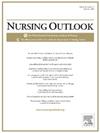A call to action for disrupting microaggressions, improving interprofessional collaboration, and optimizing outcomes: Nurse leaders have a role
IF 3.7
2区 医学
Q1 NURSING
引用次数: 0
Abstract
Background
Microaggressions are pervasive in clinical and academic environments, often unnoticed by those unaware of the privileges and power dynamics tied to socially constructed hierarchies. These subtle manifestations of bias and prejudice are typically directed toward historically marginalized individuals and groups (HMIGs), contributing to a toxic culture that undermines interprofessional communication, collaboration, and healthcare delivery.
Purpose
This article aims to explore the concept of microaggressions and their impact on healthcare environments. It provides strategies to address microaggressions through education, self-reflection, and interventions at both individual and organizational levels, emphasizing the role of nurse leaders in fostering inclusivity and optimizing outcomes.
Methods
A brief review of the literature was conducted to define microaggressions and their types—microassaults, insults, invalidations, and environmental microaggressions. Strategies and frameworks for addressing microaggressions were evaluated, focusing on the roles of victims, perpetrators, and bystanders in promoting inclusivity and dismantling hierarchies.
Discussion
Microaggressions negatively affect workplace culture, interprofessional collaboration, and healthcare outcomes, perpetuating inequities. Strategies to address these include fostering education and self-reflection, creating organizational policies for inclusivity, and empowering nurse leaders to take active roles in mitigating microaggressions. Frameworks encourage all stakeholders to act, supporting a culture of equity and effective communication.
Conclusion
Dismantling hierarchies and promoting inclusive communication are essential for reducing bias, improving healthcare outcomes, and ensuring equity. Nurse leaders play a pivotal role in addressing microaggressions and fostering collaboration, ultimately contributing to a more inclusive and equitable healthcare system.
呼吁采取行动,打破微侵犯,改善跨专业合作,优化结果:护士领导可以发挥作用。
背景:微侵犯在临床和学术环境中普遍存在,经常被那些不了解与社会建构等级制度相关的特权和权力动态的人所忽视。这些偏见和偏见的微妙表现通常是针对历史上被边缘化的个人和群体(HMIGs),造成了一种有害的文化,破坏了专业间的沟通、合作和医疗服务。目的:本文旨在探讨微侵犯的概念及其对医疗环境的影响。它提供了通过教育、自我反思和个人和组织层面的干预措施来解决微观侵犯的策略,强调了护士领导在促进包容性和优化结果方面的作用。方法:对微侵犯及其类型——微攻击、侮辱、无效化和环境微侵犯进行了简要的文献回顾。对解决微侵犯的策略和框架进行了评估,重点关注受害者、肇事者和旁观者在促进包容性和消除等级制度方面的作用。讨论:微侵犯会对工作场所文化、跨专业协作和医疗保健结果产生负面影响,使不平等现象持续存在。解决这些问题的战略包括促进教育和自我反思,制定包容性的组织政策,以及授权护士领导在减轻微侵犯方面发挥积极作用。框架鼓励所有利益相关者采取行动,支持公平和有效沟通的文化。结论:消除等级制度和促进包容性沟通对于减少偏见、改善医疗结果和确保公平至关重要。护士领导在解决微侵犯和促进合作方面发挥着关键作用,最终有助于建立一个更加包容和公平的医疗保健系统。
本文章由计算机程序翻译,如有差异,请以英文原文为准。
求助全文
约1分钟内获得全文
求助全文
来源期刊

Nursing Outlook
医学-护理
CiteScore
6.20
自引率
7.00%
发文量
109
审稿时长
25 days
期刊介绍:
Nursing Outlook, a bimonthly journal, provides innovative ideas for nursing leaders through peer-reviewed articles and timely reports. Each issue examines current issues and trends in nursing practice, education, and research, offering progressive solutions to the challenges facing the profession. Nursing Outlook is the official journal of the American Academy of Nursing and the Council for the Advancement of Nursing Science and supports their mission to serve the public and the nursing profession by advancing health policy and practice through the generation, synthesis, and dissemination of nursing knowledge. The journal is included in MEDLINE, CINAHL and the Journal Citation Reports published by Clarivate Analytics.
 求助内容:
求助内容: 应助结果提醒方式:
应助结果提醒方式:


